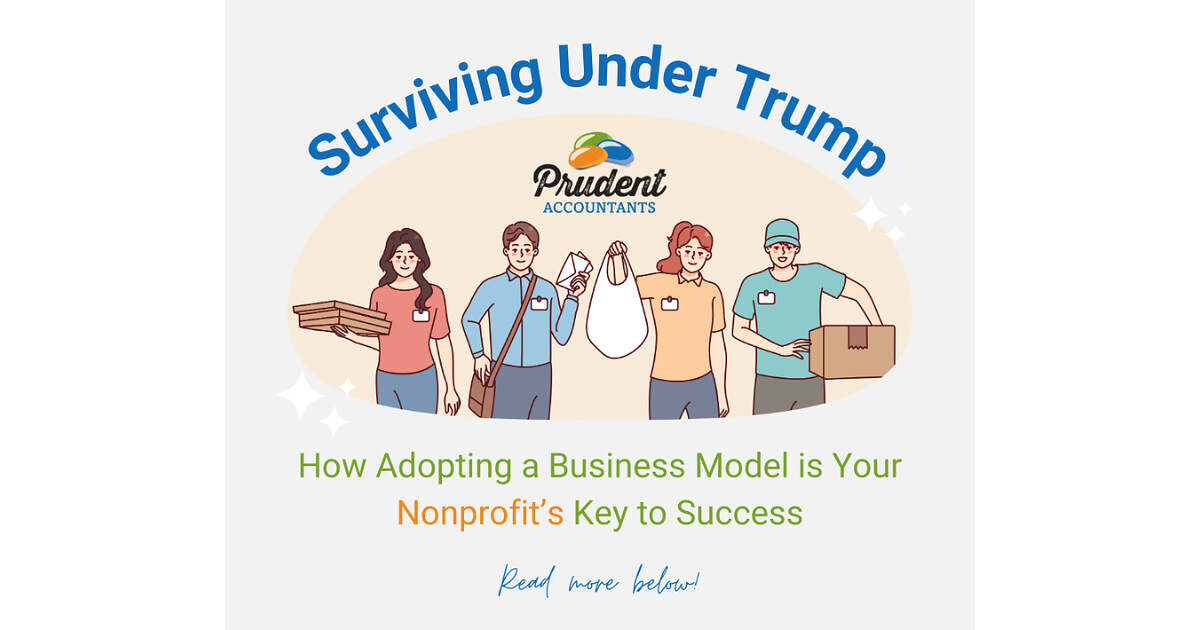Anticipating Changes Under Trump’s Presidency: How Nonprofits Can Adapt to a Business-Like Model for Survival

The nonprofit sector is facing a transformative moment. With funding models changing and increased scrutiny on measurable outcomes, nonprofits can no longer afford to operate solely on mission-driven passion. Instead, they must adopt the mindset of a business, focusing on measurable returns on investment (ROI) to compete for funding and prove their impact.
To achieve this, nonprofits need strong financial strategies and expert minds who can balance the books while maximizing the social value of every dollar spent. Here’s how nonprofits can align their operations with business principles to secure their future.
1. Why Nonprofits Must Operate Like Businesses
Historically, nonprofits have been mission-first organizations, prioritizing purpose over profits. While this focus remains critical, today’s funding environment demands a new level of accountability and efficiency.
Here’s why:
- Competition for Funding: Governments, foundations, and private donors are increasingly scrutinizing ROI. Funding is now going to organizations that can prove their impact in measurable, financial terms.
- Evolving Donor Expectations: Modern donors want transparency. They need to see how their contributions lead to concrete, quantifiable results.
- Sustainability Challenges: Over-reliance on grants or one-time donations leaves nonprofits vulnerable. A business-like approach ensures stability and growth through diversified revenue streams and financial planning.
2. The Role of Financial Strategy in Nonprofit Success
Nonprofits that embrace sound financial strategy will position themselves for long-term sustainability.
Here’s how strong financial minds can reshape your organization:
1. Strategic Budgeting
- Outcome-Oriented Spending: Shift from funding programs based on passion to funding programs based on measurable outcomes.
- Cost-Benefit Analysis: Evaluate programs by comparing their social impact to their cost. Keep or expand programs that provide the best “social ROI.”
2. Revenue Diversification
- Fee-for-Service Models: Explore charging fees for services, training, or resources where applicable to supplement donor funds.
- Earned Income Ventures: Invest in initiatives that generate income while aligning with your mission, such as social enterprises or product sales.
- Corporate Sponsorships: Build partnerships with businesses that share your values, creating mutually beneficial collaborations.
3. Financial Transparency
- Data-Driven Reporting: Use financial tools to track and share impact metrics with donors and stakeholders, proving how funds are used effectively.
- Lean Operations: Identify inefficiencies and streamline processes to maximize resources and reduce overhead costs.
4. Long-Term Planning
- Reserves for Stability: Build financial reserves to weather unexpected funding changes, such as a grant not being renewed.
- Impact Investing: Consider reinvesting a portion of your budget into sustainable ventures that yield both social and financial returns.
3. Building a Financially Strong Nonprofit Team
Nonprofits often overlook the importance of having skilled financial professionals on their team.
Here’s why they are indispensable:
- Budgeting with Purpose: Financial experts can align your budget with strategic goals, ensuring every dollar advances your mission.
- Measuring ROI: Strong financial minds know how to calculate and present the return on donor investments, which is critical in today’s results-focused environment.
- Compliance and Accountability: They ensure adherence to regulations, maintain donor trust, and prevent mismanagement of funds.
- Scenario Planning: Financial leaders can anticipate funding challenges and create contingency plans, safeguarding your nonprofit’s operations.
4. Transforming Mission Teams Into Outcome-Driven Teams
To thrive, nonprofits need to shift from mission-focused to outcome-driven operations. This doesn’t mean losing sight of the mission; it means tying every activity back to measurable results.
Here’s how:
1. Train Your Team on Impact Measurement
- Equip program managers and staff with tools to track outcomes.
- Define clear performance metrics tied to your mission.
2. Reward Data-Driven Decisions
- Shift from anecdotal success stories to evidence-based program evaluations.
- Encourage innovation by tying funding to proven results.
3. Collaborate Across Sectors
- Pair financial experts with mission-focused teams to ensure the best use of resources.
- Partner with for-profit businesses to share expertise and leverage efficiencies.
5. Balancing Mission and Measurable Outcomes
Nonprofits are not businesses, but they must adopt a business-like approach to ensure their sustainability.
The key is balance:
- Mission First, Data Always: Never lose sight of your mission, but recognize that data is your best ally in proving your impact and securing funding.
- Impact as Your Bottom Line: Treat measurable social outcomes as your “profits.” Use these metrics to showcase success and attract investment.
- Innovation Backed by Strategy: Be bold in pursuing new initiatives, but back them with financial projections and risk assessments.
Conclusion: Planning for the Future
Nonprofits must evolve to thrive in a funding landscape focused on efficiency and outcomes. By running your nonprofit like a business—building strong financial teams, focusing on ROI, and proving measurable value—you can secure your mission’s future while staying true to your core purpose.
Strong financial minds are no longer a luxury; they are essential. They help ensure your nonprofit is sustainable, scalable, and impactful in a world where measurable outcomes are king. Now is the time to embrace this transformation and set your organization up for long-term success.








